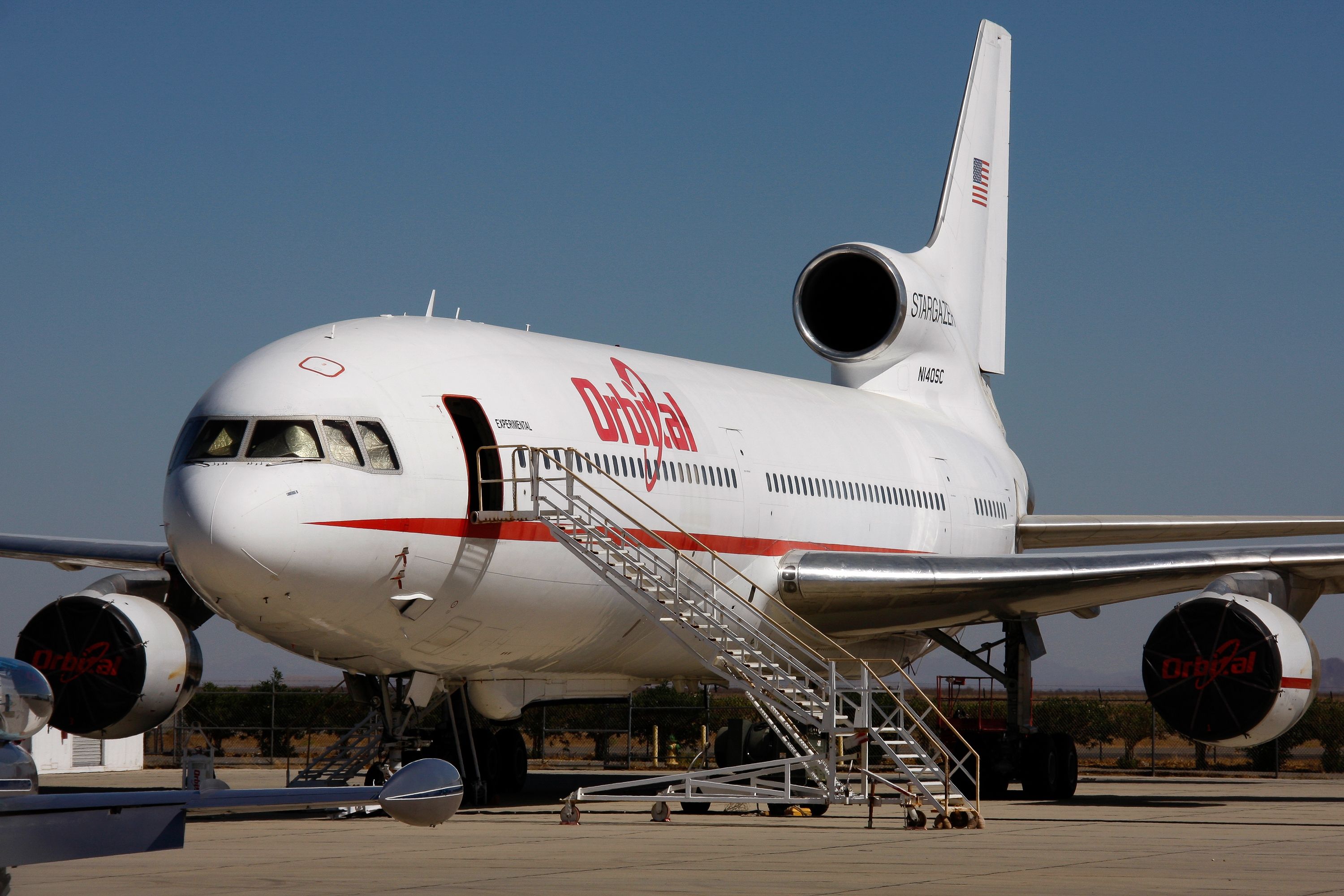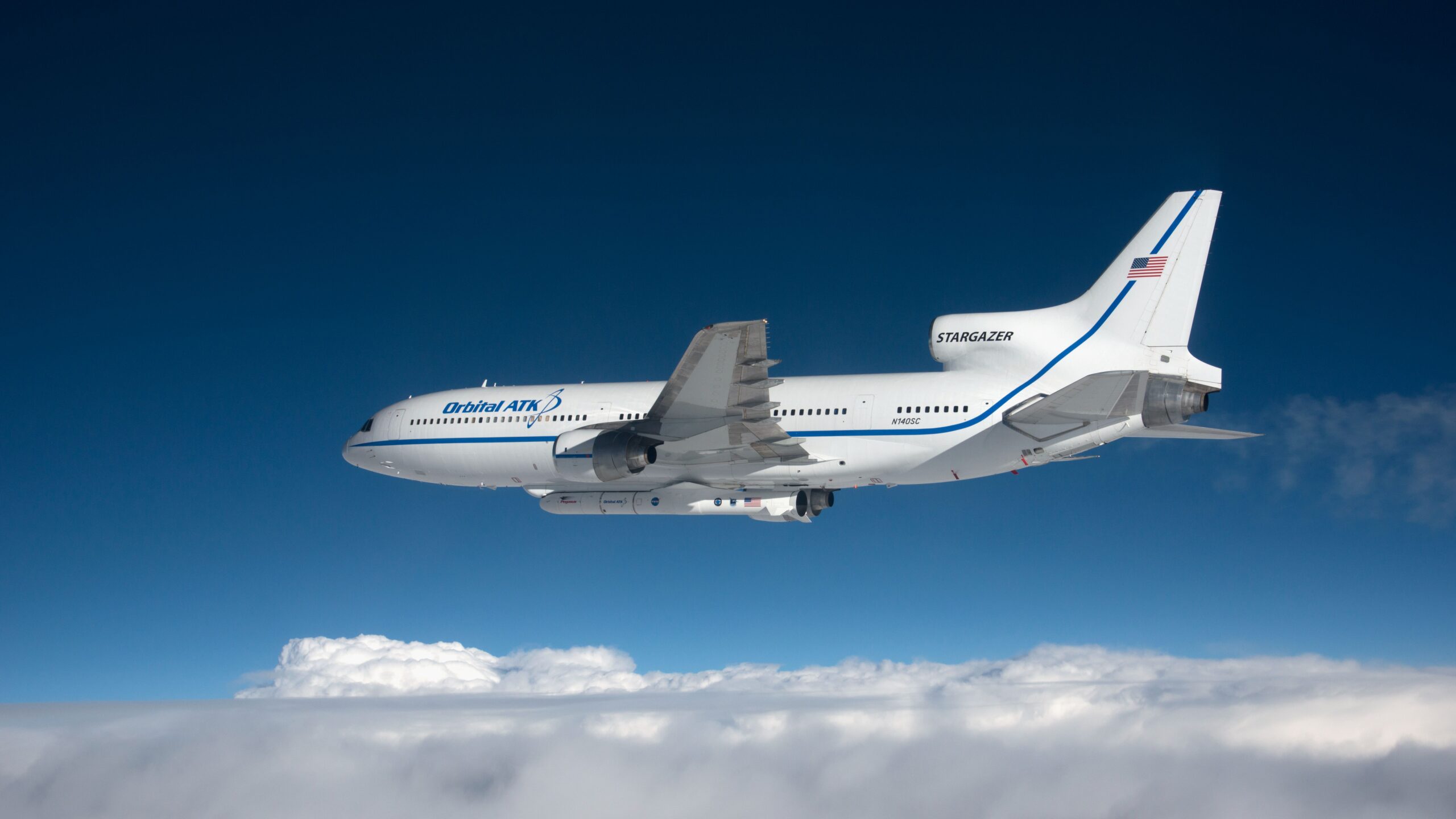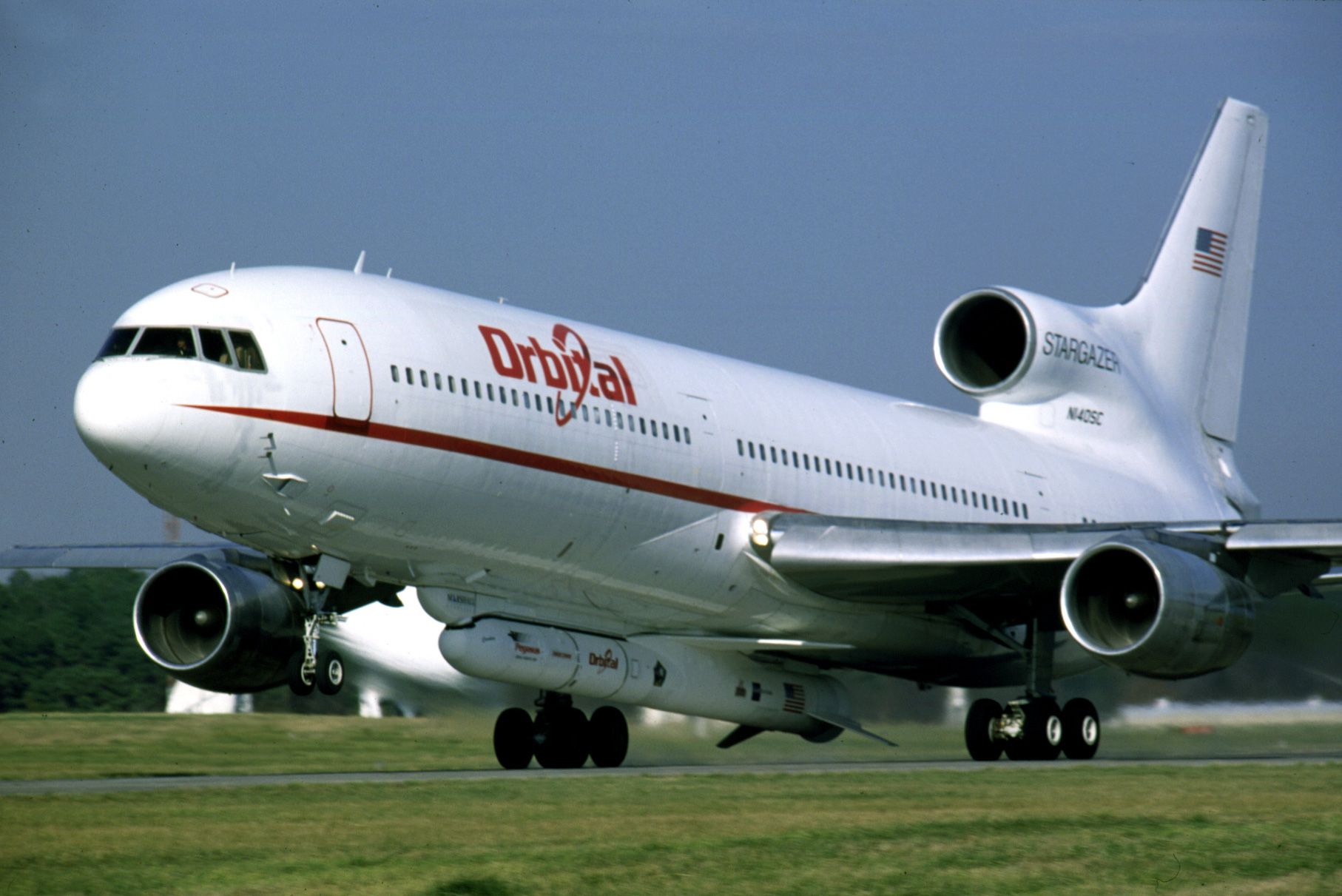Summary
- The Stargazer, a modified Lockheed L-1011 TriStar, has successfully launched over 100 satellites into space.
- Originally built for Air Canada, the TriStar was repurposed by Orbital Sciences Corporation to launch Pegasus rockets.
- Despite being 50 years old, the Stargazer remains the only L-1011 TriStar in active service with Northrop Grumman.
The “Stargazer” has undergone a fascinating journey since its early days as a passenger jet with Air Canada. The Lockheed L-1011 TriStar spent two decades ferrying passengers around before it was repurposed for a new and rather unusual function.
As its name might suggest, its new vocation involved space, specifically as a launching platform for rockets heading into space. The trijet has since conducted scores of successful rocket launches and is currently the only L-1011 TriStar in service.
The L-1011 TriStar
Before we get into what happened to the Stargazer, let’s first take a look at the Lockheed L-1011 TriStar and see how it came to be. In the late 1960s, American Airlines approached Lockheed and Douglas and asked the aircraft makers if they could build a medium-to-long-range, widebody trijet airliner. A stipulation was that it would be big enough to carry as many as 250 passengers on transcontinental routes.
Having experienced some difficulties with its military aircraft program, Lockheed was eager to renter the civilian airliner market. In answer to American Airlines’ request, Douglas came up with the DC-10 and Lockheed devised the L-1011.
Because Lockheed built the TriStar using the latest technology available, the price of the plane was more expensive than the DC-10. The design of the TriStar featured a two-aisle interior, large enough to accommodate as many as 400 passengers in a single-class configuration.
American Airlines went with the Douglas DC-10
Despite showing considerable interest in the L-1011, American Airlines ultimately chose the DC-10. Since AA did not buy the TriStar, the first deliveries went to Trans World Airlines (TWA) and Eastern Air Lines. The TriStar received its FAA certification on April 14, 1972, and entered service with Eastern Air Lines on April 26, 1972.
To break even on the project, Lockheed needed to sell 500 L-1011 TriStar aircraft, but due to many delays, lost out to the McDonnell Douglas DC-10. In the end, during its production run between 1968 and 1984, Lockheed built 250 L-1011 TriStars. The failure to break even on the project forced the Maryland-headquartered company to withdraw from the civilian aircraft marketplace and concentrate on the production of military aircraft and defensive systems.
Launching rockets into space
The Lockheed TriStar airframe that would become the Stargazer was built in 1974 and delivered to Air Canada as C-FTNJ the same year. In 1994, Virginia-based firm Orbital Sciences Corporation purchased the plane with the intention of using it to help launch satellites into space. The plane was then sent off to Marshall Aerospace in Cambridge, England, where it was modified to carry Pegasus rockets.
Following its modification, the TriStar Stargazer first launched a Pegasus rocket into space on June 27, 1994. Pegasus satellite launches usually took place from Vandenberg Air Force Base in Santa Barbara County, California, while several launches were also made from the Cape Canaveral Air Force Station and the NASA Kennedy Space Center in Florida.
Besides the plane taking off from bases in the United States, there were also Pegasus flights that left from the Canary Islands and Kwajalein Atoll in the Marshall Islands. The Stargazer takes off with its payload attached to its underside before ascending to around 40,000 ft. The Pegasus rocket is then released before igniting and continuing its journey into space – this method is quite common as it enables rockets to gain sufficient altitude without the need for a resource-intensive first stage booster to get it off the ground.
Photo: Photofex_AUT | Shutterstock
The Stargazer’s payload – the Pegasus rocket – is designed for small satellite launches of up to 1,000 lbs. Other famous aircraft that have performed similar missions include the Boeing B-52 Stratofortress used by NASA and, more recently, Virgin Orbit’s “Cosmic Girl”, a modified Boeing 747-400 used for LauncherOne rockets.

Related
Is This Modified Boeing 747 The Coolest In The World?
Cosmic Girl is reaching for the stars.
Northrop Grumman acquires Orbital Sciences
In 2010, Stargazer was fitted with more powerful Rolls-Royce RB211-524B4 turbofans, replacing the original RB211-22Bs. After failing to launch the NASA Cyclone Global Navigation Satellite System (CYGNSS) on its first attempt due to issues with the hydraulic release of the Pegasus rocket, the Stargazer successfully deployed the satellite on December 15, 2016.
In 2018, Orbital Sciences was acquired by Northrop Grumman, and the Stargazer was repainted in Northrop Grumman livery to reflect its new owner. After being delayed multiple times, Stargazer successfully launched the Ionospheric Connection Explorer weather satellite on October 11, 2019.
Still in service today
Today, despite being half a century old, the Stargazer remains active and has successfully launched over 100 satellites into space during over 45 launches. More notable, the airframe is now the only Lockheed L-1011 TriStar still in active service.
|
Specification |
Detail |
|---|---|
|
Wingspan |
50.09 meters (164 feet 4 inches) |
|
Length |
54.17 meters (177 feet 8 inches) |
|
Height |
16.87 meters (55 feet 4 inches) |
|
Maximum Takeoff Weight |
231,332 kilograms (510,000 pounds) |
|
Engines |
3 Rolls-Royce RB211-524B turbofan engines |
|
Thrust per Engine |
50,000 lbf (220 kN) |
|
Payload Capacity |
23,000 kilograms (51,000 pounds) |
|
Service Ceiling |
42,000 feet |

Related
Are There Any Lockheed L-1011s Still Flying?
It has been more than 15 years since the type last operated scheduled passenger services, but what about other uses?



